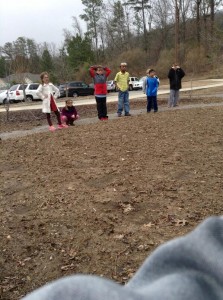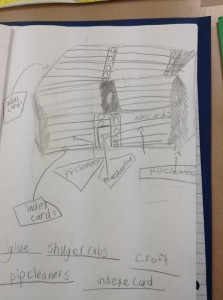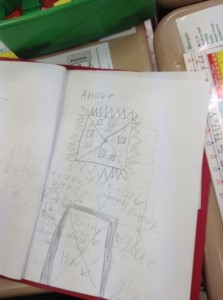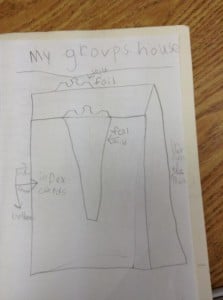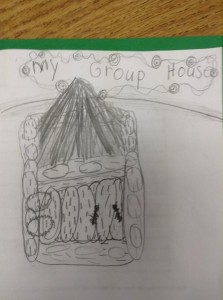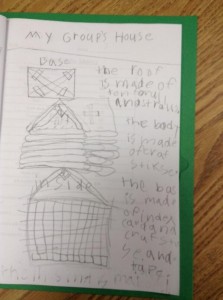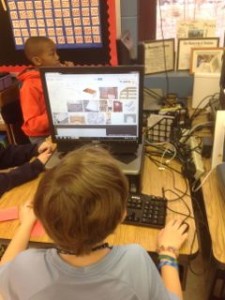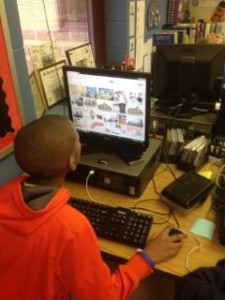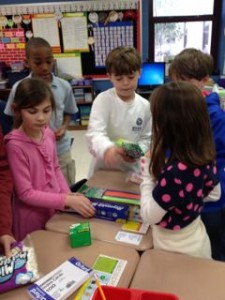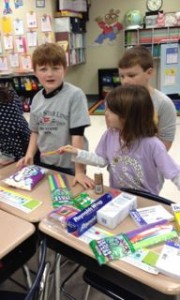I wrote posts about my first adventure into project-based learning. In case you missed them- Part 1, click here; Part 2, click here.
Just a reminder of the project’s driving question:
As architects, what is the cheapest house we can build to protect the three little pigs from the Big, Bad Wolf?
The next part of the project involved designing a house for the three little pigs from the material list. Before we designed houses, we needed to feel the force of the “Big, Bad Wolf.” We tested out different materials with the hair dryer. Most materials struggled with the hair dryer. The students began discussing they needed a combination of materials to build a strong house. We also went outside to see how a leaf blower affected the materials. (side note: We will not be using the leaf blower until the closing event of the unit because the class feels most houses might crush under its force. )
I wanted each student to have time to think individually so they all spread out in the room to design individual plans. I asked them to label the designs with the materials needed for each part of the house. I knew that coming together for one house design would be difficult as 2nd graders but it is a necessary life skill. COMPROMISE is a social skill that takes practice. One of the benefits of project-based learning is learning to work as a group.
Here are some pictures of individual house designs:
After finishing individual plans, each student met in their group to share their plans. They talked about what strength each plan had and worked to create one group plan.
Here are the group plans:
The next day, the students had to estimate the cost of building the house. They had to figure out the cost of each item on a calculation sheet and then find the total estimated cost BEFORE they started building. The sums grew large FAST! Here is one example:
A group needed 24 craft sticks. The craft sticks are $12 each. That’s a HUGE problem for 2nd graders. Here’s how they solved it: “We know that 1o twelves equal 120. We need to add 24 because we need two more 12’s which is 144. Now we can double that answer to get 24 twelves. 144 + 144 = 288
How amazing! 🙂 Some groups need a little guidance for the larger sums but they were determined to find the total cost. They didn’t mind that it was hard to solve.
Here is one example of a completed estimated house cost.
The next post, part 4, will be about building the houses and the Big, Bad Wolf test (hair dryer).
